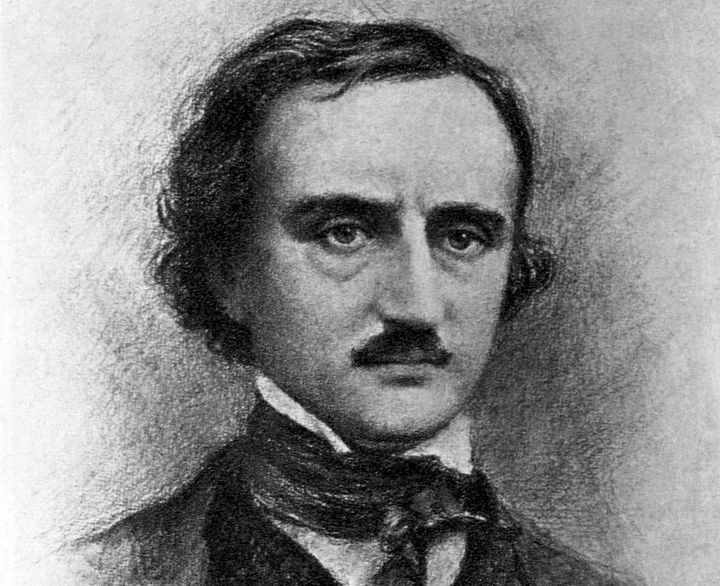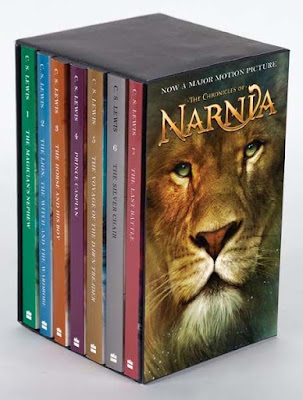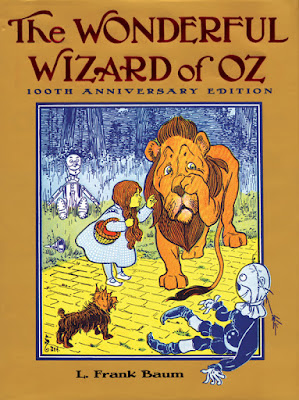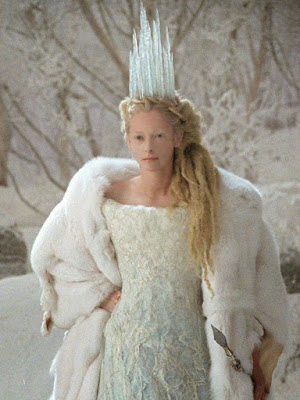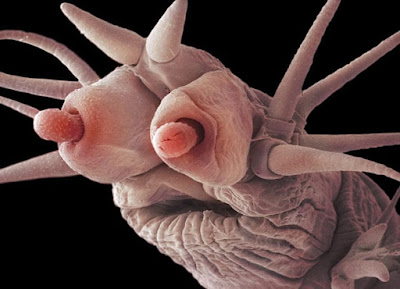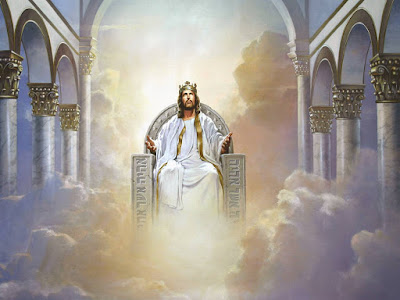Copyright 2020 by Gary L. Pullman
The Lamb
Little
Lamb, who made thee?
Dost
thou know who made thee,
Gave
thee life & bid thee feed
By
the stream & o'er the mead;
Gave
thee clothing of delight,
Softest
clothing wooly bright;
Gave
thee such a tender voice,
Making
all the vales rejoice?
Little
Lamb, who made thee?
Dost
thou know who made thee?
Little
Lamb, I'll tell thee;
Little
Lamb, I'll tell thee!
He
is called by thy name,
For
he calls himself a Lamb:
He
is meek & he is mild,
He
became a little child:
I
a child & thou a lamb,
We
are called by his name.
Little
Lamb God bless thee.
Little
Lamb God bless thee.
The
Tyger
Tyger
Tyger, burning bright,
In
the forests of the night;
What
immortal hand or eye,
Could
frame thy fearful symmetry?
In
what distant deeps or skies.
Burnt
the fire of thine eyes?
On
what wings dare he aspire?
What
the hand, dare seize the fire?
And
what shoulder, & what art,
Could
twist the sinews of thy heart?
And
when thy heart began to beat,
What
dread hand? & what dread feet?
What
the hammer? what the chain,
In
what furnace was thy brain?
What
the anvil? what dread grasp,
Dare
its deadly terrors clasp!
When
the stars threw down their spears
And
water'd heaven with their tears:
Did
he smile his work to see?
Did
he who made the Lamb make thee?
Tyger
Tyger burning bright,
In
the forests of the night:
What
immortal hand or eye,
Dare
frame thy fearful symmetry?
“The
Tyger” is one of the poems from William Blake’s Songs
of Experience.
It contrasts with its antithetical companion piece, “The Lamb” in
Songs
of Innocence.
To understand fully both “The Lamb” and “The Tyger,” they
should be read side by side, because each is opposed in the images,
symbolism, and theme that it conveys and, for this reason, deepens
and enriches its opposite’s meanings, as suggested by the companion
poem.
In
“The Lamb,” the speaker of the poem is obviously a child. (The
etching that the poet created as an illustration to accompany this
poem also shows its speaker to be a child, a young boy). He speaks as
a child, in a lilting, singsong fashion, repeating the same questions
over and over. He sees the lamb as “little,” like himself, and
identifies with the animal as a fellow creature rather than as a
beast of a different species. He also personifies the lamb,
addressing the animal as if it were a person:
Little
Lamb who made thee
Dost
thou know who made thee. . . ?
The
lamb’s Maker is the one, the child assumes, who has directed the
lamb’s innocent, simple, pastoral life—an
existence that involves mostly eating in a pleasant habitat, “by
the stream & o'er the mead.”
The
lamb’s Creator, the child says, made it a delightful creature,
giving it both “softest clothing wooly bright” and “a tender
voice” that causes “all the vales [to] rejoice.” The
description of the lamb is that, almost, of a living, breathing plush
animal. This is the lamb as seen through the eyes of the child,
through the eyes of innocence.
On
a deeper level, the lamb, for the child, symbolizes Jesus Christ, who
became a “little child,” making it possible for the speaker of
the poem to identify with the baby Jesus:
Little
Lamb who made thee
Dost
thou know who made thee
Little
Lamb I'll tell thee,
Little
Lamb I'll tell thee:
He
is called by thy name,
For
he calls himself a Lamb:
He
is meek & he is mild,
He
became a little child:
I
a child & thou a lamb,
We
are called by his name.
The
innocent lamb, “meek and mild,” like both the child and nature’s
Creator, who both “calls himself a Lamb” and “became a little
child,” allows the child to experience a oneness with both nature
(the lamb) and God (Jesus Christ). The child is one with the
universe. In blessing the lamb, therefore, he blesses himself,
nature, and its Creator, all of whom, together in the lamb, are made
one. Of course, Jesus is referred to not only as a lamb but also as a
lion (“the lion of the tribe of Judah”), and the same person who
said he came in peace also said that he would return in judgment.
However, the child is unaware of these other aspects of the Creator,
just as he seems unaware of the more predatory aspects of nature.
For
this knowledge and understanding, the child must become an adult. The
vision of innocence must expand to encompass the vision of
experience.
In
“The Tyger,” Blake provides a snapshot, as it were, of one of
God’s fiercest predators. It is important to observe that Blake
does not attribute the tiger to a natural origin apart from God, as
if the animal appeared as a result of a mindless evolutionary
process.
Rather,
the tiger, in all its ferocity, was “framed” by “hand” that
“dared” to “seize the fire” in which the tiger’s fiery eye
had burned among the “distant deep” of heaven’s stars.
Likewise, a “shoulder” was employed in the “art” of twisting
“the sinews” of the tiger’s heart.
The
predator’s creator was present when the animal’s heart began to
beat, and it was the tiger’s Creator who, as a smith, operated the
“hammer” and the ‘chain” and the “anvil” that were used
to “forge” the animal’s very brain. The tiger is clearly very
much, by conscious design, the creation of God, who has given the
beast its fierce and predatory nature as much as he has shaped the
correspondingly “fearful symmetry” of the great cat’s body,
which is “burning bright/In the forests of the night.” That the
dark forest was chosen as this creature’s habitat is further
evidence within the poem that the animal’s fierce nature was
intentional from the beginning, as it is a fitting—perhaps
the only-truly fitting—environment
for such a fearful beast.
What
does the tiger’s “fearful symmetry” suggest about its creator?
“Did he smile his work to see?” the speaker of the poem wonders,
adding, “Did he who made the Lamb make thee?” The Judeo-Christian
concept of God is that he is almighty, yes, but also a loving and
good God. The mighty tiger’s form and nature seem to cast doubt
upon the notion that God is benevolent, kind, and loving.
Alternatively, it at least challenges readers to remember that divine
ways and human ways are not the same and that there is a complexity
to God that is beyond human reckoning, for God did also create the
lamb. As nature itself demonstrates, God is obviously the author of
polarities, of opposites, and, perhaps, at least as viewed from the
human perspective, of contraries which, as Blake insists elsewhere,
are necessary to progress.
“The
Tyger” ends as it began, with the same questions as those with
which it began, as if the existence of the fierce, predatory tiger
suggest truths about its Creator that are too terrible for the
speaker of the poem to accept. Doubts rise, but they seem to be
repressed. Insight does not become knowledge; it is merely the
catalyst for more and more doubt and fear. Perhaps it is best to ask
the same questions again and again than to accept the answers that
seem to arise.
Which
is the true representation of God, the “meek and mild” Creator
who made the lamb or the conscious artisan who crafted the fierce and
predatory tiger? Neither is complete or, by itself, an accurate
depiction of God, for God is not what he appears to human beings,
either as they envision him through childhood’s innocence or
adulthood’s experience. He is, instead, both/and and neither/nor.
However, the recognition of such complexity, which arises from the
mental, emotional, and spiritual shock, of an awareness of the
conflicting polarities, or contraries, within one’s own view of
nature and God, may be the beginning of a wisdom that knows, at
least, what God is not.
By
accepting these antitheses, the opposites themselves are not
reconciled, but the whole idea that they must be reconciled is
transcended in the acceptance of a transcendent God who is beyond
innocence and experience and beyond all other polarities that mark
the boundaries of human understanding. Thus, contraries make progress
in understanding oneself, one’s world, and one’s place in one’s
world possible.




























